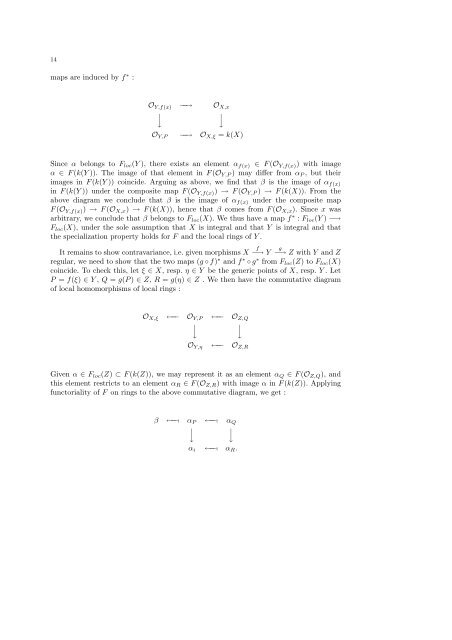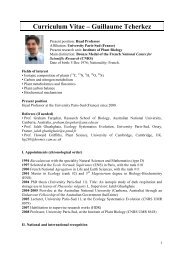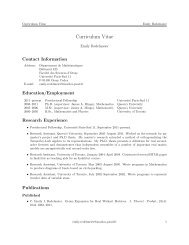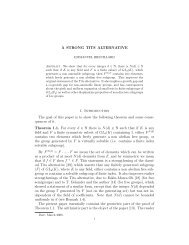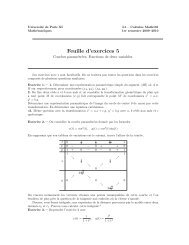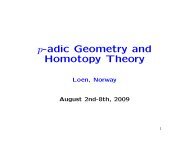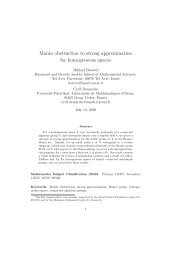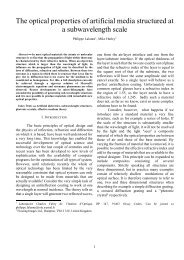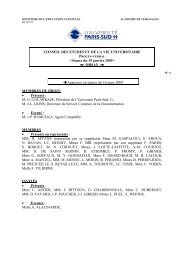Birational invariants, purity and the Gersten conjecture Lectures at ...
Birational invariants, purity and the Gersten conjecture Lectures at ...
Birational invariants, purity and the Gersten conjecture Lectures at ...
You also want an ePaper? Increase the reach of your titles
YUMPU automatically turns print PDFs into web optimized ePapers that Google loves.
14<br />
maps are induced by f ∗ :<br />
O Y,f(x) −−→ O X,x<br />
⏐<br />
⏐<br />
↓<br />
↓<br />
O Y,P −−→ O X,ξ = k(X)<br />
Since α belongs to F loc (Y ), <strong>the</strong>re exists an element α f(x) ∈ F (O Y,f(x) ) with image<br />
α ∈ F (k(Y )). The image of th<strong>at</strong> element in F (O Y,P ) may differ from α P , but <strong>the</strong>ir<br />
images in F (k(Y )) coincide. Arguing as above, we find th<strong>at</strong> β is <strong>the</strong> image of α f(x)<br />
in F (k(Y )) under <strong>the</strong> composite map F (O Y,f(x) ) → F (O Y,P ) → F (k(X)). From <strong>the</strong><br />
above diagram we conclude th<strong>at</strong> β is <strong>the</strong> image of α f(x) under <strong>the</strong> composite map<br />
F (O Y,f(x) ) → F (O X,x ) → F (k(X)), hence th<strong>at</strong> β comes from F (O X,x ). Since x was<br />
arbitrary, we conclude th<strong>at</strong> β belongs to F loc (X). We thus have a map f ∗ : F loc (Y ) −→<br />
F loc (X), under <strong>the</strong> sole assumption th<strong>at</strong> X is integral <strong>and</strong> th<strong>at</strong> Y is integral <strong>and</strong> th<strong>at</strong><br />
<strong>the</strong> specializ<strong>at</strong>ion property holds for F <strong>and</strong> <strong>the</strong> local rings of Y .<br />
It remains to show contravariance, i.e. given morphisms X −→ f<br />
Y −→ g<br />
Z with Y <strong>and</strong> Z<br />
regular, we need to show th<strong>at</strong> <strong>the</strong> two maps (g ◦ f) ∗ <strong>and</strong> f ∗ ◦ g ∗ from F loc (Z) to F loc (X)<br />
coincide. To check this, let ξ ∈ X, resp. η ∈ Y be <strong>the</strong> generic points of X, resp. Y . Let<br />
P = f(ξ) ∈ Y , Q = g(P ) ∈ Z, R = g(η) ∈ Z . We <strong>the</strong>n have <strong>the</strong> commut<strong>at</strong>ive diagram<br />
of local homomorphisms of local rings :<br />
O X,ξ ←−− O Y,P ←−− O Z,Q<br />
⏐<br />
⏐<br />
↓<br />
↓<br />
O Y,η ←−− O Z,R<br />
Given α ∈ F loc (Z) ⊂ F (k(Z)), we may represent it as an element α Q ∈ F (O Z,Q ), <strong>and</strong><br />
this element restricts to an element α R ∈ F (O Z,R ) with image α in F (k(Z)). Applying<br />
functoriality of F on rings to <strong>the</strong> above commut<strong>at</strong>ive diagram, we get :<br />
β ←−− α P ←−− α Q<br />
⏐ ⏐<br />
↓ ↓<br />
α i ←−− α R .


